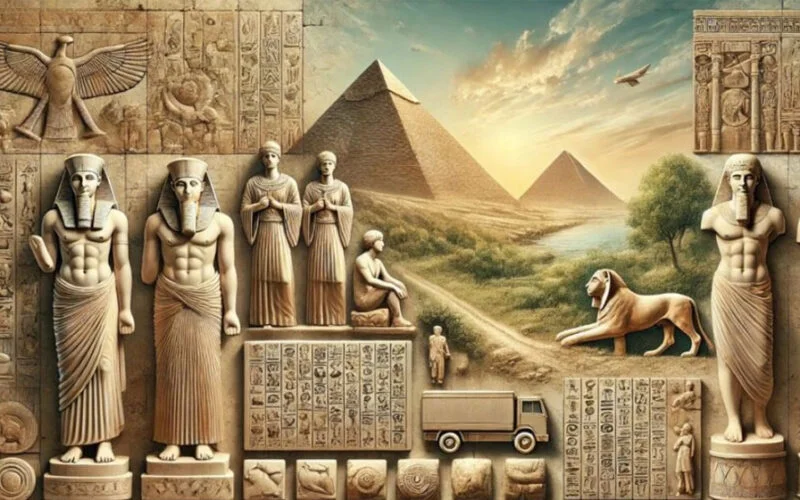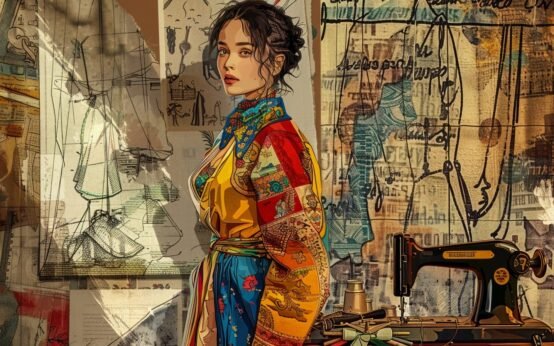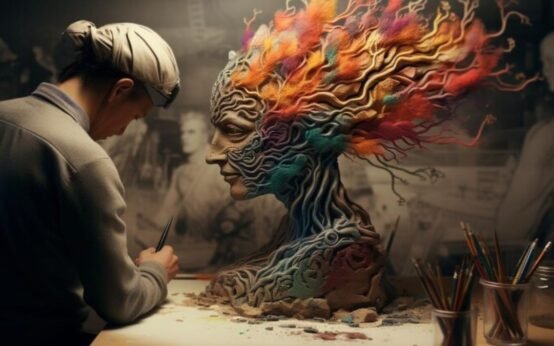Introduction
Ancient art isn’t just a reflection of past civilizations; it connects us to their imagination, creativity, and values. Ancient Artz’s appeal is how it cultivates modern creativity and innovation while guarding what formerly came from humanity`s cultural roots. In addition to being captured as relics, these art pieces are an everlasting fountain of creativity, inspiring much of art, culture, and design even today.
This blog focuses on Ancient Artz, its iconic examples, its significance in contemporary culture, and preservation efforts for the next generations.
Table of Contents
What is Ancient Artz?
Ancient art refers to the artistic creations of older civilizations that preceded modern ones. These include, but are not limited to, paintings, sculptures, architecture, and even dramatic arts and utilitarian crafts. All these objects testify to history, which encompasses the beliefs, customs, and narratives of the time they were made.
The notion of Ancient Artz is not only about recording history but also encompasses efforts to reproduce, examine, and perpetuate these works with the aim of some social relevance. Through scholarly work, restoration, or public exhibit, the objective is to acknowledge these magnificent works and the cultures that produced them.
Key Features and Offerings of Ancient Artz
Ancient Artz is unique from other works in that it merges artistic excellence with storytelling practices. These items represent social values, religious beliefs, and everyday practices from specific periods of history. Ancient artworks deliver three essential features: meticulous designing techniques, multifaceted symbolism, and enduring motivational power. Social institutions and digital curation continue to present Ancient Art as an influential creative and cultural presence.
Famous Examples of Ancient Artz
The Parthenon Marbles (Greece)
Western civilization adores the Parthenon Marbles, which Greek artisans created during ancient times. These artworks emerged from the Parthenon temple of Athens to show mythological contents that revealed Greek spiritual beliefs and artistic achievements. Placing these artifacts in international museums leads to continuous discussions between countries about cultural heritage retrieval.
Egyptian Pyramids and Their Artwork
The remarkable pyramids of ancient Egypt are the traditional symbol people associate with this civilization. These fantastic buildings conceal fascinating facts in their rooms, matching their external grandeur. Numerous elaborate religious symbols, carvings, and vibrant paintings, which help scholars understand beliefs about death and sacred practices of ancient Egyptians, decorate these holy chambers. These monumental structures serve beyond their functional purpose by merging artistic expression with religious elements and narrative content that continues to shape cultures throughout multiple millennia.
Ancient Roman Mosaics and Frescoes
Roman civilization brought artistic innovation through its advanced mosaic work combined with its fresco techniques. The artistic creations of that era showed regular activities, legendary stories, and remarkable scenery depictions. The Roman artistic heritage includes villas, bathhouses, and temple decorations, displaying advanced technique and profound attention to detail while attracting present-day artistic practitioners.
The Influence of Ancient Artz on Modern Culture
Ancient Art in Contemporary Art
The Renaissance resurgence of classical art themes led directly to modern neoclassicism movements and contemporary interpretations of ancient symbolism that influenced contemporary artistic practices at Ancient Artz. Modern exhibition galleries feature classical Greek sculptures and their digital equivalents through graphic design representations of Egyptian symbols. These connections prove that ancient art is far from outdated; it’s foundational to artistic evolution.
The Role of Museums and Collections
The Louvre, the British Museum, and the Met function as essential locations for preserving ancient art. Such institutions protect sensitive works while allowing anyone across the globe to experience them. They provide exhibits while running workshops and managing digital collections that protect the masterpieces for future educational and inspirational uses.
Preserving Ancient Artz for Future Generations
Conservation Techniques
Preserving ancient art involves precise and careful techniques. The restoration process includes cleaning and repairing damaged works, but restorers need to maintain their intrinsic original quality. The protection of ancient materials from environmental damage depends on two conservation processes: climate-controlled environments and protective casings.
The Role of Technology in Ancient Art Preservation
Technology has revolutionized how Ancient Artz is preserved. 3D scanning alongside digital modeling enables thorough artwork examinations by researchers who operate without actual touching and protect the artwork from harm. Modern technologies let researchers access Ancient Artz through AI restoration services, and virtual museum displays that benefit academic and public audiences.
Why Ancient Art Continues to Inspire
Universal Themes in Ancient Artz
The core elements of Ancient Artz mythology are the fundamental concepts of love, loss, war, mythology, and spirituality. These basic human principles enable ancient artistic works to maintain their impact on present-day audiences. The same timeless human experiences in marble venues and Egyptian sun god paintings unite audiences with the distant past.
The Timelessness of Ancient Artz
Ancient Artz’s appeal lies in its ability to transcend eras. Whether it’s the precise geometry of the pyramids or the emotional storytelling of Greek sculptures, these works continue to educate and inspire. Their endurance ensures they remain fertile for creative exploration and cultural understanding.
The Everlasting Significance
Ancient Artz exploration demands more than visual appreciation because it enables people to encounter the fundamental spirit of artistic development and historical events. Through their timeless nature, these masterpieces show how different human communities understood and portrayed their positions in their world and environment.
Look around the next time you find yourself in a museum, online artwork gallery, or historical media show because these artifacts represent the essence of eternal art. Historical artifacts function as more than chronological artifacts, becoming essential pathways that keep past civilizations alive today.
Which piece of Ancient Artz has inspired you the most? Share your thoughts below and join the conversation!


 Exploring FFbooru: A Deep Dive into Fan Art Communities
Exploring FFbooru: A Deep Dive into Fan Art Communities  ATFBoru Unveiled: How This Platform is Revolutionizing Anime Art Sharing
ATFBoru Unveiled: How This Platform is Revolutionizing Anime Art Sharing  How Oeuvre Camera Redefines Modern Photography Techniques
How Oeuvre Camera Redefines Modern Photography Techniques  Len Pullen: Innovator in Art, Leadership, and Social Advocacy
Len Pullen: Innovator in Art, Leadership, and Social Advocacy  ArtofZio: Stunning Digital Art That Tells a Story
ArtofZio: Stunning Digital Art That Tells a Story